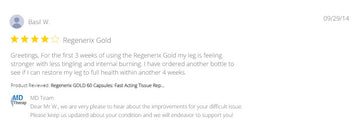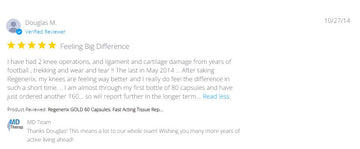Cervical Isometrics (Flexion/Extension/Lateral Flexion): Quiet Strength for a Sensitive Neck
by MD therapeutics on Aug 17, 2025
Why cervical isometrics help (the principles)
-
Stability without motion: Light, pain-free muscle tension around the neck joints boosts segmental stability without shearing or end-range compression—ideal during flare-ups or early rehab.
-
Recruits the deep system: Flexion holds cue the deep neck flexors; extension holds cue suboccipital/neck extensors; side-bend holds train lateral stabilizers. Balanced co-contraction eases workload on irritated facets/discs.
-
Improves nerve tolerance: Gentle, sustained activation can reduce threat perception and muscle guarding, helping down-regulate pain and allow later mobility/strength work.
-
Posture synergy: Better isometric control supports neutral head-on-trunk alignment, making desk work and driving more comfortable.
How to do it (precise, range-aware)
General rules: Tall posture, eyes level, tongue resting on the roof of the mouth. Work at ~20–30% effort (light!), breathe normally, and keep symptoms ≤3/10.
-
Flexion isometrics (front): Place two fingers on your forehead. Glide the chin back (mini chin-tuck) and press forward into your fingers just enough to feel the throat muscles engage. Hold 5–10 s, relax 5 s. Reps: 6–10.
-
Extension isometrics (back): Fingers behind the head (occiput). Keep the chin gently tucked and press backward into your hand without lifting the chin. Hold 5–10 s × 6–10.
-
Lateral flexion isometrics (sides): Right hand to right temple. Keep nose forward and press head sideways into hand (don’t bend). Hold 5–10 s × 6–10; repeat left.
-
Frequency: 1–2×/day in a calm range; 3–4×/wk for maintenance.
-
Progressions: Longer holds (up to 15 s), multi-direction “around the clock,” then add scapular retractions and thoracic extension work.
-
Safety: Stop for dizziness, radiating/tingling symptoms, or pain that lingers >24 h. For acute trauma or known instability, clear with your clinician first.
Limits of exercise alone
-
Systemic drivers remain: Sleep, stress, diet, and metabolic health influence pain sensitivity and recovery.
-
Flares cap training load: People under-load or stop when pain spikes.
-
Capacity gaps: Most need scapular strength (lower traps/serratus), thoracic mobility, and ergonomic fixes alongside isometrics.
-
Slow remodeling: Tendons, discs, and ligaments adapt over months—consistency + recovery + nutrition beats “exercise only.”
Why add nutritional correction
-
Improve circulation to deliver oxygen and nutrients to working tissues after holds.
-
Promote repair with structural inputs (e.g., collagen peptides, hyaluronic acid) that your training “signals” into use.
-
Reduce excessive inflammation so you can practice consistently.
-
Avoid tissue damage by buffering oxidative and catabolic stress from repeated loading.
Botanicals & nutrients often paired with neck-friendly rehab
(Blends traditional lore with published research; evidence ranges from promising to mixed. Check interactions and personal suitability with your clinician.)
-
Ginger (Zingiber officinale): Ayurvedic/East Asian traditions for circulation and “wind-damp” aches; standardized extracts show modest symptom support in some osteoarthritis trials.
-
Turmeric / Curcumin (Curcuma longa): Longstanding Ayurvedic use; bioavailability-enhanced curcumin has reduced arthritis pain and improved function in multiple studies; culinary turmeric alone has little curcumin.
-
Boswellia / Frankincense (Boswellia serrata): Ayurveda’s shallaki; standardized extracts associated with improved pain/function in OA cohorts.
-
Winter Cherry / Ashwagandha (Withania somnifera): Adaptogen supporting resilience; trials suggest immunomodulatory effects and symptom support that may aid training tolerance.
-
Collagen Peptides (Type II focus): Provide peptides that may support cartilage/connective-tissue metabolism—useful with posture retraining and isometrics.
-
Hyaluronic Acid (oral): Contributes to joint lubrication/viscosity; used to support smooth motion and comfort.
-
Cat’s Claw (Uncaria spp.): Amazonian tradition for “rheumatism”; small trials show short-term pain improvements, though evidence remains limited.
The practicality problem
-
Food-only dosing is hard: Daily, research-like intakes of curcumin or ginger via meals are impractical.
-
Pill burden & cost add up: Buying six–seven separate products (ginger, turmeric, boswellia, ashwagandha, collagen, HA, cat’s claw) means many capsules and a higher monthly spend—versus one comprehensive formula.
A convenient all-in-one option: Regenerix Gold™
Prefer cervical isometrics + nutrition without juggling bottles?
-
What’s inside: Hydrolyzed Type II Collagen, Hyaluronic Acid, and a proprietary blend of Ginger, Turmeric, Frankincense (Boswellia), Cat’s Claw, and Winter Cherry (Ashwagandha)—the same seven ingredients discussed above—combined to promote healthy joint and muscle function and support everyday recovery.
-
Need only: 2–3 capsules daily.
-
Price: $98 a bottle.
-
Why it fits here: One formula covering seven evidence-linked ingredients is simpler—and typically more cost-effective—than buying 5–7 separate supplements.
-
Track record: Recommended by doctors and physical therapists internationally for about a decade (individual clinician views vary).
Supplements support healthy function; they don’t diagnose, treat, or cure disease. Check interactions (e.g., anticoagulants with turmeric/ginger/boswellia) and suitability with your clinician.
This week’s mini-plan
-
Daily: Flexion, extension, and side-bend isometrics—6–10 holds each, 5–10 s per hold, light 20–30% effort.
-
3×/wk add-ons:
-
Chin tucks 2×10 (3–5 s holds),
-
Scapular retractions (band) 2–3×12–15,
-
Thoracic extensions (roller) 1–2×8–10.
-
-
Ergonomics: Screen at eye height, elbows by sides, headset for calls.
-
If symptoms spike/radiate: Halve effort and hold time; if still irritated, pause and seek guidance.



